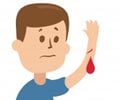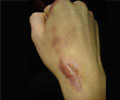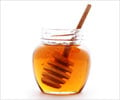Two clinicians presented case series illustrating the benefits of MEDIHONEY dressings for this challenging patient population.
Chronic, non-healing wounds can be a serious problem for children as many currently available treatment modalities can be too harsh or toxic. At the 2010 Symposium on Advanced Wound Care (SAWC) and the Wound Healing Society (WHS), an international conference drawing clinicians from all over the globe which was held April 17-20 in Orlando, two clinicians presented case series illustrating the benefits of MEDIHONEY® dressings for this challenging patient population. MEDIHONEY® dressings are a unique key line of products whose active ingredient is medical-grade active Leptospermum honey (ALH), indigenous to New Zealand, that can succeed in alleviating wounds when other treatments have failed. Princeton-based Derma Sciences, Inc. owns the global rights to MEDIHONEY.
The first investigator, Roxana Reyna RNC, WCC, studied three young patients at Driscoll Children’s Hospital in Corpus Christi. All underwent a number of treatments—including IV antibiotic therapy, advanced wound care dressings, negative pressure wound therapy, and topical antimicrobial dressings—yet their wounds failed to make satisfactory progress toward healing, and slough, pain, exudates, and odor remained.Reyna’s first patient, a 17-year-old male, suffered from hidradenitis suppurativa for three years.Surgical debridement, negative pressure wound therapy dressings, skin grafts, and topical wound care dressings were applied but failed to heal his wounds. Yet shortly after a MEDIHONEY dressing was applied every other day, his pain, exudates, and odor disappeared. His wounds were well on the way to healing after seven weeks of treatment.
Another patient, a 14-year-old female, also with hidradenitis suppurativa, had received negative pressure wound therapy, yet one wound developed increased exudates with malodor. Caregivers applied MEDIHONEY dressings. The exudates decreased, and the odor was completely eradicated by the second dressing change. She was on the way to healing by the end of the first week.
And an 18-year-old male who had developed an unstageable ischial pressure ulcer during an episode of sepsis related to an infected dialysis catheter, was initially treated with surgical debridement and negative pressure wound therapy. The wound exhibited slough, exudates and malodor. When MEDIHONEY was applied to the slough, followed by application of negative pressure wound therapy three times per week, the slough dissipated, exudates diminished, malodor was completely eradicated and healing was noted.
The second investigator, Charleen Deo RN, BSN, CWOCN, studied five pediatric patients at Lucile Packard Children’s Hospital at Stanford in Palo Alto. Again, all had chronic, non-healing wounds that were not responding to available therapy. However, within one week, application of MEDIHONEY resulted in improvement in all wounds.
For example, an 11-year-old boy developed a wound on his left calf prior to receiving cardiac transplant surgery. Post-operatively he was receiving steroid therapy, but after three weeks the wound had failed to improve. Caregivers applied a MEDIHONEY dressing covered with a foam island dressing every three days. By the second dressing change, the boy’s pain was considerably decreased; by the second week, eschar lifted painlessly when the dressing was removed. By week five, the wound was healed.
And a 13-year-old girl with a history of spina bifida presented with a chronic, non-healing, three-month-old pressure ulcer. Unsuccessful treatment included bacitracin covered with dry gauze. The wound was cleansed with normal saline, liquid skin barrier dressing was applied to the periwound skin, a MEDIHONEY dressing was applied to the wound, and covered with a foam island dressing that was changed every other day. After one week, the wound had decreased in size and it healed completely by week two.
Source-Newswise
SRM











